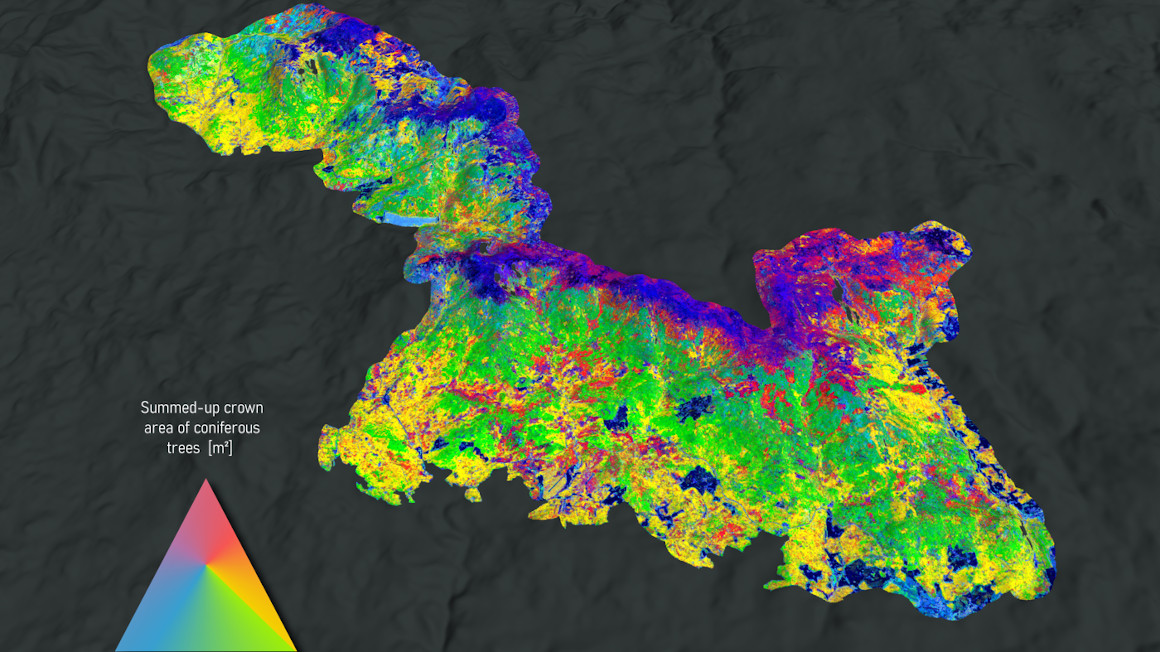Forest observation from a distance with AI
Researchers at Munich University of Applied Sciences have developed an AI-based method that enables a precise inventory and development forecast of forests.

The state of the forests is worrying. Many trees are suffering from drought, pests and storms. The consequences of climate change have already clearly left their mark on spruce, pine, beech and oak trees – according to the latest forest condition report. According to the report, four out of five trees are diseased. A new analysis method developed at Munich University of Applied Sciences could help to protect the forest ecosystem and prevent further damage.
AI-based forest survey from a bird's eye view
With the help of remote sensing data from the European Space Agency's Sentinel-1 and Sentinel-2 satellites and artificial intelligence (AI), a comprehensive data set was created for forest surveying as part of the Wald5DPlus project. A newly developed algorithm ensures that data gaps caused by clouds are compensated for. According to the researchers, data from drones and aeroplanes was also used ‘to calculate typical forest characteristics such as tree species, heights and density’.
The result was a method that enables researchers to map and analyse forest areas more easily - without having to enter the forests. ‘Until now, surveying forests has been very time-consuming, especially in areas that are difficult to access,’ explains Andreas Schmitt, one of the project leaders. ‘With our method, we can record the condition of forests with high accuracy from a bird's eye view.’
Great potential for forestry and environmental protection
However, the AI-supported method can be used to record more than just the tree population in detail. It is also possible to predict how forests will change in the future. ‘We are putting together a puzzle from various data sources. Only by combining this information can we obtain a complete picture of the forest,’ explains Sarah Hauser, research associate in the project.
The researchers are convinced that the new AI-based analysis method offers great potential for forestry and environmental protection. A prediction could prove particularly useful in the fight against forest damage and ensure efficient management. For example, ‘forest damage caused by pests or extreme weather events could be recognised at an early stage and reforestation measures could be better planned’, the researchers write. ‘Our method has proven to be very effective. At a test site, we were able to observe how AI correctly predicted the growth of young spruce trees under old beech trees,’ reports Schmitt.
Data set freely accessible
The ‘Wald5Dplus’ project was funded by the Federal Ministry for Economic Affairs and Climate Protection. The collected data set for forest measurement - including scripts and models - is available to the public via zenodo.org. ‘We want to give researchers and interested parties around the world the opportunity to carry out their own analyses and contribute to the conservation of forests,’ explains Hauser.
bb


